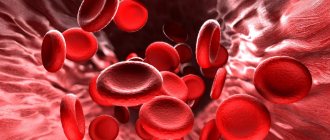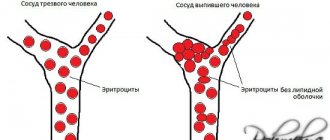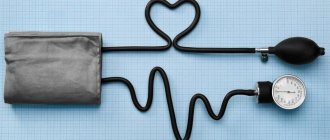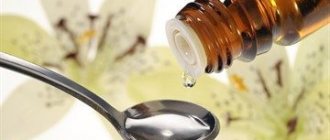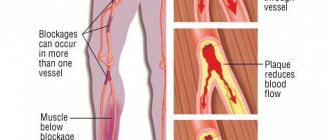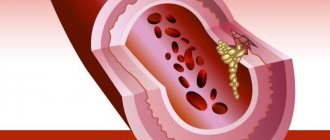- June 30, 2018
- Cardiology
- Katya Tkach
It is believed that high blood pressure is much more serious and dangerous than low blood pressure. However, this is not quite true.
Any deviations in pressure from the norm are harmful to the body and internal organs, because they indicate interruptions in the cardiovascular system, have a negative effect on the liver and kidneys, and cause insidious inconvenience and pain.
Why is a sharp drop in blood pressure dangerous? What are its symptoms, diagnostic methods and treatment options? Are there any preventive measures for this disease? Let's find out.
Definition of disease
Orthostatic hypotension (in other words, orthostatic collapse) cannot be called an independent disease, since most often it manifests itself against the background of various neurological ailments.
The vessels of the brain are responsible for stabilizing blood pressure in the human body. They are the ones who must maintain fixed pressure levels, regardless of body position, physical activity, emotional stress and other internal or external factors.
Often, orthostatic (postural) hypotension occurs due to changes in body position and can last only a few minutes. Despite the short duration of the attacks, the disease is characterized by constant and regular manifestation.
Orthostatic hypotension is characterized by a decrease in pressure by 20 mm. rt. Art. (systolic indicators) and by 10 mm. rt. Art. (diastolic indicators). What is happening in the body at this time?
Causes
The main reason is the lack of blood supply to the brain, as well as the delayed reaction of the heart and blood vessels when changing body position. Such conditions can be caused by:
- inflammatory heart diseases and arrhythmias;
- blockage of blood vessels with atherosclerotic plaques;
- head injuries;
- meningitis and encephalitis;
- prolonged bed rest - due to a person’s inactivity, blood vessels lose elasticity and the ability to contract in a timely manner;
- varicose veins on the legs.
The reasons for low blood pressure may be hidden in a deficiency of vitamins and microelements, overwork and lack of sleep.
Poor working conditions, and in particular underground work, also have an impact on the development of orthostatic hypotension.
A sharp decrease in blood pressure is often felt by athletes; experts call this form of hypotension a disease of high fitness. In this case, lowering blood pressure is the body’s protective reaction to constant stress.
Pathogenesis of the disease
The mechanism of development of orthostatic hypotension is due to a change in body position from horizontal to vertical. When a person changes his position from lying to standing, blood accumulates in the lower extremities and delays its uniform movement there. Because of this, less blood than necessary returns to the heart, and blood pressure drops sharply.
To stabilize blood pressure, the body begins to take active actions, as a result of which the heart rate increases and blood vessels narrow. This state of affairs also negatively affects the patient’s well-being.
There is another kind of disease associated with increased pressure in a horizontal position (or standing position) - orthostatic hypertension. Every cardiologist knows how to treat it.
What are the objective causes of orthostatic hypotension?
Causes
Insufficient blood in the vessels is the main cause of orthostatic collapse. The following factors reduce blood flow:
- Cardiac pathologies.
Orthostatic hypotension is usually caused by bradycardia. If the body withholds its response when blood flow slows down, pressure readings drop sharply.
- Endocrine diseases.
Hypotension is caused by thyroid pathologies, hypoglycemia, Addison's disease, and diabetes.
- Dehydration.
Severe diarrhea, fever, excessive physical activity, impaired drinking regime - these are the reasons that cause a decrease in blood pressure. The listed pathological conditions are accompanied by leakage of water from tissues. Lack of fluid in the body reduces the amount of blood. Slow blood flow provokes collapse.
- Neurological diseases.
In nervous disorders, blood pressure regulation is disrupted. Amyloidosis and Parkinson's disease lead to attacks.
- Postprandial hypotension.
Blood pressure drops sharply after eating. For this reason, orthostatic hypotension develops mainly in older people. When choosing a treatment method, the root cause of the disease is taken into account.
The likelihood of orthostatic collapse increases:
- pregnancy;
- alcoholism;
- prolonged bed rest;
- use of certain medications;
- strict diets;
- stress, depression;
- old age.
The strength and frequency of collapses varies among patients. Patients suffer from isolated and recurrent attacks. Whatever the main causes of postural hypotension, it is necessary to monitor your health and regularly visit a doctor.
Sources of disease
The most common culprits of orthostatic collapse are various imbalances and dehydration (due to vomiting, diarrhea, excessive sweating, increased body temperature, sunstroke or improper use of diuretics).
Blood loss (due to internal or external bleeding, heavy menstruation, and so on) is also considered an important factor for the development of the disease.
Orthostatic hypotension (the symptoms of which will be listed below) can also be caused by various chronic diseases of the heart (low pulse, heart failure, valve pathology), the endocrine system (adrenal insufficiency, diabetes mellitus, low glucose levels, thyroid disease), from the nervous system (autonomic failure, hydrocephalus, Parkinson's disease), etc.
Other risk factors for developing symptoms of orthostatic hypotension include: pregnancy (due to an increase in blood supply), old age (due to atherosclerosis and other serious diseases), constant stress, use of certain medications or psychotropic drugs (high dose of diuretics, blood pressure medications etc.), alcohol and drug abuse, eating.
Disorders with similar symptoms
Symptoms of the following conditions may be similar to those of orthostatic hypotension. Comparisons can be useful for differential diagnosis:
- Neurally mediated syncope is a general term for a group of conditions in which a sudden change in the activity of the autonomic nervous system results in a drop in blood pressure. Neurally mediated fainting may result in temporary loss of consciousness (syncope). People often experience non-specific symptoms just before the episode begins (prodome). These symptoms include paleness, yawning, sighing, nausea and abdominal discomfort. It is usually accompanied by additional symptoms such as difficulty concentrating, cognitive impairment, and hearing and/or vision problems. This group of disorders includes vasovagal syncope, in which there is a temporary disruption of blood circulation in the brain. The condition may occur during times of emotional stress, pain, or mild shock. It may also result from prolonged bed rest, anemia, fever, fasting, or mild heart disease.
- Postural orthostatic tachycardia (POTS) is a rare condition characterized by a persistent heart rate greater than 30 beats per minute, occurring after 10 minutes of standing. In many cases, the heart rate approaches 120 beats per minute. Additional symptoms include dizziness, blurred vision, shaking and weakness, especially in the legs. Excessive fatigue, shortness of breath, and exercise intolerance may also occur. Some patients may experience nausea, difficulty concentrating, anxiety, headaches, and pain or cold. The exact cause of POTS is unknown. Most researchers believe that the disorder is the result of multiple factors (eg, environmental, genetic, immunological).
Manifestations of hypotension
The main symptoms of orthostatic hypotension are not only changes in body position, but also prolonged standing in one place, crisis-hot weather, emotional and physical exhaustion or overstrain.
Other symptoms of orthostatic hypotension include:
- dizziness when standing up;
- heaviness in the head;
- hearing impairment, tinnitus;
- causeless weakness and fatigue;
- increased sweating;
- trembling of limbs, convulsions;
- blurred vision, darkening of the eyes;
- frequent fainting or short-term fainting.
It is noteworthy that the above manifestations of the disease are long-term and regular. For example, dizziness when standing up may not go away even after a person takes a sitting position, increased sweating will bother you both during the day and at night, and heaviness in the head may be accompanied by nausea and even vomiting.
If the disease affects internal organs, then additional symptoms of orthostatic hypotension may include shortness of breath, palpitations, heart pain, and interruptions in breathing.
Often the patient is able to independently determine a sharp drop in blood pressure or an approaching attack. Then he will need to take a sitting position so as not to fall during fainting or loss of consciousness.
What to do if you find yourself with the signs listed above? First of all, you need to consult a specialist to diagnose orthostatic collapse and prescribe effective treatment.
Causes and risk factors
Orthostatic hypotension can be a temporary condition or occur continuously over time (chronic). Some sources break down the causes of OH into drug-induced, non-neurogenic, primary and secondary neurogenic causes. In many cases, the underlying cause of orthostatic hypotension remains unknown or unconfirmed (idiopathic). Most idiopathic cases are thought to have a neurogenic cause.
- Medications.
Orthostatic hypotension can be caused by certain chemotherapy drugs, which can cause autonomic neuropathy. A common cause of OH is a decrease in circulating blood volume (hypovolemia) resulting from overuse of medications that increase urination and sodium loss (diuretics) or medications that dilate blood vessels (vasodilators) to treat high blood pressure (hypertension), heart failure, or chest pain (eg, calcium blockers and nitrates).
Recognition of the disease
The basis for diagnosing postural hypotension is measuring blood pressure in two positions: lying and standing. This can be done in several ways.
The first method (active load method) involves the patient abruptly moving from a lying position to a sitting position. If the patient has a predisposition to hypotension, the pressure in the second position will be significantly less than the pressure in the first.
The second diagnostic method (passive load) involves placing the patient on a specialized stand that rotates. When a patient is moved from a lying position to a standing position, his muscles and muscles remain unused.
During such orthostatic tests, in addition to blood pressure indicators, attention is also paid to the patient’s pulse and his general well-being. If the patient's heart rate increases, the patient turns pale, and other signs of fainting are observed, postural hypotension is diagnosed.
To make a correct diagnosis, the patient will be advised to take a blood test. What indicators should you pay attention to in this case?
First of all, a biochemical blood test will reveal anemia or hypoglycemia (low hemoglobin or glucose levels). In addition, blood tests can check levels of sodium, creatine and potassium, as well as the presence of hormones in the blood that reflect the condition of the thyroid gland.
Other effective methods for diagnosing the disease can be an electrocardiogram, Holter monitoring, stress test, tilt test and others.
Depending on the results obtained and after a detailed examination of the patient, the attending physician will establish a diagnosis. What could he be like?
Treatment
Orthostatic collapse begins to be treated after the cause of the attacks is established. Therapy is aimed at eliminating the symptoms of the underlying disease, and not at the consequences of low blood pressure.
For mild orthostatic hypotension, treatment involves simple steps. If dizziness occurs, you should take a sitting or lying position.
When your consciousness clears up, you can return to your normal life.
If blood pressure drops under the influence of medications, therapy consists of adjusting the dose or stopping the medication. Sometimes you have to change several types of medications.
Drug therapy
There are several methods that describe how to treat complicated orthostatic hypertension and hypotension. Self-medication for such diseases is strictly prohibited.
To prevent the occurrence of attacks, you need to go to an appointment with a therapist, the attending physician will select medications taking into account the symptoms.
When patients suffer regular orthostatic collapses, they are prescribed:
- The use of hydrocortisone derivatives (corticosteroids increase the volume of blood in the vessels, which leads to an increase in pressure).
- Taking medications from the group of alpha-adrenergic agonists (medicines do not allow blood vessels to dilate; pressure rises in a narrowed bloodstream).
- The use of drugs with catecholamic acid. (medications are used if postural hypotension is due to Parkinson's disease).
- Using tablets with caffeine and epoetin (after proper use of stimulants, vascular tone increases and blood pressure rises).
- The use of adaptogens (medicines that stimulate the autonomic nervous system).
- The use of drugs with nootropic effects (medicines restore blood circulation in the brain tissues).
Drug therapy is carried out for regularly recurring severe collapses. Patients with mild hypotension are prescribed adaptogens and recommended to adhere to preventive measures.
If attacks occur against the background of another pathology, the doctor draws up a treatment regimen for the root cause. Arrhythmia is eliminated with medications that can regulate the heartbeat.
Pacemakers help cope with the disease. Infections are treated with antibiotics. After heavy bleeding, blood is infused.
Patients who suffer from persistent fainting when standing up do not need drug therapy in most cases. They are strongly advised to pay attention to preventive measures.
Compliance with the rules prevents the occurrence of situations that lead to dizziness.
Traditional methods
Herbal extracts can reduce the intensity of orthostatic hypotension. Alcohol tinctures based on:
- ginseng;
- Eleutherococcus;
- Chinese lemongrass;
- Rhodiola rosea;
- golden root.
Herbal teas also raise blood pressure. It has been proven that such products tone blood vessels. Patients are recommended a simple method that describes how to treat orthostatic hypotension with herbal teas:
- pour 1 teaspoon of dry raw materials (ginseng, eleutherococcus, golden root or Rhodiola rosea) into 250 ml of boiling water;
- the aqueous extract is filtered after cooling;
- take 100 ml 2 times in the morning on an empty stomach.
The use of herbal extracts is allowed after consultation with a doctor. The doctor selects the medications, taking into account concomitant pathologies and contraindications.
Various types of illness
Orthostatic collapse is classified according to several indicators.
By severity:
- mild (symptoms rarely occur without loss of consciousness);
- moderate (fainting occurs periodically);
- severe (loss of consciousness occurs quite often due to minimal changes in body position).
By duration of progression:
- acute (hypotension occurs after severe illness);
- chronic (the disease manifests itself regularly, on an ongoing basis);
- chronic progressive (fainting occurs suddenly, often when feeling well).
There is also a classification of orthostatic hypotension according to the causes of its occurrence:
- neurological;
- hypovolemic;
- idiopathic;
- medicinal.
What should you do if you or a loved one is diagnosed with postural hypotension? How to treat this disease? First of all, you must follow all the recommendations of your doctor.
Types of orthostatic hypotension
Orthostatic hypotension is classified according to the etiology of the process. That is, the main criterion for the division is the cause of the development of pathology. Among the varieties, six forms are distinguished.
Hypovolemia
A rare clinical variant of the disease. Accompanied by acute blood loss and a decrease in the volume of circulating blood in the body. Hence the sharp drop in blood pressure levels.
Shy-Drager syndrome
In this case, the decrease in blood pressure is secondary. The production of corticosteroids such as norepinephrine and adrenaline is impaired.
These substances have pronounced hypertensive (increasing blood pressure) properties. In the absence of adequate secretion, dysregulation of vascular tone occurs. The result is sharp jumps in blood pressure even with minimal physical activity.
Orthostatic hypotension of drug origin
Develops in patients with hypertension who are prescribed beta blockers, diuretics, calcium channel blockers and ACE inhibitors.
All of these groups of drugs, if used incorrectly, can dramatically reduce blood pressure and reduce vascular tone. Consultation with a cardiologist is necessary to adjust the dosage or select another medication.
Neurological or neurogenic form
It occurs in almost 60%, which makes it the absolute record holder for the frequency of clinical situations.
It is considered an independent nosological unit, and is presented in the international classification of diseases.
It is caused by neurocirculatory disorders due to changes in the nature of the work of the sympathetic and parasympathetic nervous systems.
The mechanisms are sometimes so complex that it is impossible to figure them out right away.
Idiopathic form of the process
This is a kind of “garbage” diagnosis, when the fact of the presence of a phenomenon is obvious, but it is impossible to determine the cause. Often, idiopathic orthostatic hypotension is diagnosed at the initial appointment, before the etiology of the process is clarified and the diagnosis is verified.
Non-drug treatment of the disease
First of all, the doctor will prescribe a certain movement regimen for the patient. It is necessary to avoid prolonged standing in one place, sudden movements and bends. It is important to get out of bed slowly and gradually, preferably from a sitting position. The patient will also be recommended physical therapy, the exercises of which will be carefully selected by a specialist according to the patient’s age and medical history.
In addition, if orthostatic hypotension occurs during drug treatment for another disease, the use of certain drugs and their dosage will be reconsidered.
Although there is no specific diet to prevent the disease, it is important to eat healthy foods during (and after) treatment, avoiding fried, spicy, salty and smoked foods, as well as alcoholic beverages. When creating a menu, it is necessary to take into account another indicator: how much liquid a person consumes per day. Its total amount (in dishes and drinks) should reach two liters per day or more.
Prevention during bed rest
Following simple rules will help maintain blood pressure within normal limits:
- Patients are prohibited from bending at the waist.
To pick up objects from the floor, you need to squat with your knees bent. Having taken the necessary thing, slowly straighten up.
- Patients with orthostatic hypotension are recommended to use compression stockings.
The products eliminate blood stagnation in the lower extremities and improve the condition of postural hypotension.
- Standing up slowly reduces the severity of dizziness and eliminates lightheadedness.
Before getting out of bed after waking up, you need to take deep breaths, slowly rise and sit up. Exercise will give the heart the necessary rhythm. They get up after 2-3 minutes, without making sudden movements. This procedure will help blood rise to the brain.
- Patients are not recommended to stand for long periods of time (static postures lead to stagnation of blood in the lower part of the body).
- You can’t stay outside for a long time in hot weather to overheat.
Drug therapy will not be needed if you follow preventive measures, adhere to proper nutrition, and lead an active lifestyle.
Drug treatment
If the stage of the disease has an acute and chronic form, it is impossible to do without specialized drug treatment. How to treat progressive orthostatic hypotension?
Here are the most common drugs: Fludrocortisone (increases the amount of fluid in the circulatory system), Midodrine (prevents the dilation of blood vessels), Droxidop (used for a concomitant disease - Parkinson's disease).
When prescribing drug therapy, several main areas of treatment for orthostatic hypertension can be distinguished. This:
- Adrenergic drugs (with vasoconstrictor effect). They will help normalize blood pressure, despite changes in body position.
- Adaptogenic agents that improve the functioning of the circulatory and respiratory systems.
- Mineralocorticoid drugs that retain sodium ions in the blood, regulate vascular spasms and prevent a drop in blood pressure.
- Nonsteroidal anti-inflammatory drugs that have a spasmodic effect.
- Beta-adrenergic blocking drugs that have a positive effect on the nervous system in general and blood pressure regulation in particular.
However, it is not always possible to use these pharmacological groups. If the cause of orthostatic hypotension is pregnancy or adolescence, then drug treatment is practically not used, but a wait-and-see approach is chosen.
Treatment methods
Treatment of orthostatic hypotension is complex, using medications and, if necessary, surgical techniques. Aimed at eliminating the root cause of the pathological condition. This is an etiological treatment.
Symptomatic is aimed at relieving symptoms; it does not play a big role in this case. To relieve an attack, tonic drugs (Citramon, Aspirin, caffeine) are used. In dosages strictly verified by the doctor. To limit the ability of blood vessels to dilate - Midodrine.
Changing the nature of life plays a big role. You cannot drink alcohol, smoke, you need to eat well and rest normally (sleep at least 8 hours a day, avoid stress), and avoid excessive physical activity. You cannot exhaust yourself in the gym, it is contraindicated and will not improve your health.
Among the methods of etiological treatment: operations to eliminate atherosclerotic plaques, normalize the condition of the heart in congenital and acquired defects, hormone replacement therapy, etc. The technique is selected based on the specific case.
First aid for attacks of hypotension
What first aid should be given to those who have symptoms of orthostatic collapse? Here is a conditional algorithm of actions:
- First of all, you should place the patient in a horizontal position, slightly raising his legs.
- Provide the patient with a way to breathe freely (ventilate the room, loosen clothing).
- If the patient faints, it is necessary to cover him with a blanket or place a heating pad next to him to warm him up.
- Rub your upper limbs with a wet towel and splash your face with cold water.
- After the patient has come to his senses, you should give him warm tea or coffee (with the addition of two or three tablespoons of sugar).
- If the fainting is prolonged, you must call an ambulance.
In a critical situation, it is important to remember that during an attack of postural hypotension it is strictly forbidden to use pharmacological drugs such as antispasmodics, antihypertensives and vasodilators.
Disease prevention
To eliminate the problem, medication alone is not enough. It is important to follow preventive measures that will relieve unpleasant symptoms and reduce the risk of complications. First of all, the patient should not suddenly get out of bed. It is very important to perform all actions smoothly and slowly. This will relieve the unpleasant manifestations of the disease.
To normalize pressure in the arteries, it is recommended:
- give up harmful products. Food must contain all necessary vitamins and microelements;
- take a walk in the fresh air and monitor your level of physical activity;
- Do not stay in a stuffy room for a long time.
You should not take any measures without the knowledge of your doctor. Only he should prescribe medications and other therapeutic techniques.
Serious consequences of the disease
Orthostatic hypotension is a serious condition that can ultimately lead to ischemia and stroke, memory loss and impaired mental performance. Orthostatic collapse can also provoke various types of injuries and damage (due to sudden fainting). It is possible to avoid such unpleasant consequences and complications.
To do this, you should take the necessary preventive measures, consult a doctor on time and strictly follow his instructions and treatment regimens. And then the decrease in blood pressure, no matter how sharp and sudden it may be, will not take you by surprise and will not have a critical impact on your well-being and usual way of life.
Forecast
The prognosis for orthostatic hypotension is influenced by the patient's behavior. The disease recedes if a person changes his lifestyle, takes care of his health, and adheres to preventive measures.
When the orthostatic response occurs due to a weakened autonomic nervous system, attention must be paid to physical activity. It is useful to take walks and perform therapeutic exercises. Sports training can completely eliminate the pathological condition.
Complications appear if dizziness occurs frequently and attacks are severe. The likelihood of developing undesirable consequences is higher in older people. Negative manifestations include:
- injuries that occur during a fall while fainting;
- diseases of the heart and blood vessels (pain syndrome appears in the chest area, heartbeat is disturbed, heart failure develops);
- stroke (during pressure surges, the blood supply to brain tissue deteriorates, which leads to hemorrhages);
- brain hypoxia (oxygen starvation occurs with recurrent hypotension, lack of oxygen causes the death of brain cells);
- worsening of existing neurological diseases.
Subacute form of the disease
Orthostatic hypotension can occur acutely or subacutely. When the balance is disturbed and there is no compensation for fluid loss, a subacute form of the disease develops.
- Formed elements and plasma are lost in the blood (during bleeding, heavy periods in women). 66–70 ml per 1 kg of body weight is the volume of circulating blood in the human body. It must be constantly maintained. About 40 ml/kg is plasma. With a moderate loss of red blood cells and other cells, there may be no symptoms for a long time, and this does not affect health in any way. But the liquid part must be urgently compensated for when drinking.
- In comparison with circulating plasma, fluid losses through respiration and sweating are not very noticeable, because they are relatively small and occur constantly. But if a person develops a fever during illness and there is increased sweating, then the volume of loss increases significantly and affects blood circulation. This situation is also possible when working near stoves, in hot climates, in a bathhouse, or when performing heavy physical activity. Massive burns and artificial ventilation trigger a similar mechanism of fluid loss through the respiratory tract and skin. In what cases does orthostatic hypotension still develop?
- If there is a high content of glucose, nitrogenous substances, protein, which occurs with excessive consumption of protein foods, kidney disease, when the filtration properties of the kidney tissue change, with diabetes, then water leaves in the urine. In addition to impaired protein and glucose metabolism, in this situation the fluid balance changes in a negative direction, since water is also lost in the urine.
- In case of frequent repetitions of vomiting and diarrhea and insufficient fluid intake, this is especially true for the child’s body. During the day, up to 7 liters of liquid are formed in the gastrointestinal tract, food replenishes 2 liters, and only about 200 ml is lost with emptying.
- Due to an insufficient amount of electrolytes, a redistribution of the liquid part of the blood, calcium, sodium, potassium, iron, and phosphorus salts occurs. This happens when hormone synthesis is disrupted and the adrenal glands are damaged. Shock, stress, anxiety in sensitive people can provoke such a situation.
All this is reflected in the total amount of blood. The first thing to suffer is the brain, which manifests itself in symptoms of hypotension.
Pathogenetic mechanisms
Normally, a sharp rise from a lying position leads to the flow of up to 1 liter of blood into the vessels of the lower body, including the abdominal cavity. At the same time, venous return and stroke volume decrease, and a short-term decrease in blood pressure occurs. The changes lead to a weakening of the signal from the baroreceptors of the aortic arch and cardiopulmonary zone. This causes an increase in the activity of the sympathetic nervous system and a decrease in the basal tone of the vagus nerve. A compensatory reaction occurs, which is manifested by a narrowing of large vessels and the peripheral vascular network. The pressure rises, the condition returns to normal. The entire process takes a few seconds, so most people do not notice the changes occurring.
Symptoms of the disease
Patients complain of the following symptoms:
- severe dizziness (even when sitting);
- blurry, without clear focus, vision;
- cramps in the limbs;
- state of general weakness;
- hearing loss;
- increased sweating.
A general deterioration of the condition can be observed with prolonged standing or sitting in one position, attempts to stand up or change body position.
The appearance of signs of the syndrome can be triggered by a number of factors - severe physical fatigue, excessive stress (carrying heavy loads with a backpack putting pressure on the carotid arteries), overeating meat products, drinking heavy food, chokeberry juice and abuse of alcoholic beverages. During the syndrome, the blood supply to the brain decreases, sudden convulsions appear, and the patient loses consciousness for a short time.
Treatment of postural hypotension
Treatment of orthostatic collapse is carried out according to different principles. Features of therapy depend on the cause of the pathology.
First aid
An attack of postural hypotension can occur at any time. If a person loses consciousness, it is important to provide first aid:
- Place it on a flat surface with your legs slightly elevated.
- Provide fresh air and free breathing. To do this, it is necessary to open a window or window in the room and rid the person of tight clothing and oppressive accessories (tie, belt, scarf). If the attack occurred outside in hot weather, the victim should be placed in the shade.
- The limbs need to be rubbed. It is better to use fabric for this.
- If possible, ammonia should be used. You must act carefully, as the product can lead to respiratory arrest due to irritation of the respiratory tract.
- When consciousness returns and blood pressure normalizes, give the victim warm, sweet tea.
An ambulance should be called. You should not use any medications on your own. It is strictly forbidden to resort to vasodilators, antihypertensive antispasmodics.
We recommend that you additionally read the article on how to provide emergency assistance for hypotension.
Drug treatment
Medicines for orthostatic hypotension should be taken only after the diagnosis has been confirmed. A specialist should prescribe drug therapy, taking into account the characteristics of the pathology in a particular patient and the causes that caused it. The following drugs are often used:
- Midodrine. This drug is an antihypertensive and α-adrenergic agonist. It increases blood pressure when standing.
- Northera (Droxidopa). Today it is the only approved medication specifically for the treatment of orthostatic collapse. The drug is indicated for pathology caused by disorders of the autonomic nervous system.
- β-blockers. Drugs in this group tone the autonomic nervous system and blood vessels. Such medications, when taken simultaneously with mineralocorticosteroids, enhance the effect of the latter.
- Mineralocorticosteroids. Under the influence of these drugs, the volume of circulating blood increases and blood pressure rises.
- Fludrocortisone. This drug is a synthetic analogue of mineralocorticosteroids.
- Adaptogens. These drugs provide stimulation of the central nervous system and activate the sympathetic department of its autonomic part.
- Non-steroidal anti-inflammatory drugs. They act on peripheral vessels, causing them to contract.
If the development of postural hypotension is caused by taking medications, then their discontinuation is necessary. If the patient cannot do without such therapy, then medications with an alternative effect are selected for him.
With orthostatic collapse, it is important to control the course of chronic diseases. For this purpose, the patient needs clinical observation, which will also allow timely identification of complications of the pathology.
Lifestyle
Both during the treatment period and in the future, the patient is recommended to adhere to the following rules:
- normalize the daily routine, ensuring proper sleep and intermediate rest;
- eat small portions;
- limit carbohydrates if disorders are caused by postprandial hypotension;
- maintain a drinking regime, but exclude alcohol;
- increase daily salt intake (not recommended in old age and with diseases of the cardiovascular system);
- do not stand up abruptly; when lying down, it is recommended to first sit for a while;
- use compression stockings;
- when standing for a long time, move your legs;
- do not forget about moderate physical activity;
- Do not bend over too much, it is better to squat.
In case of postural hypotension, you should regularly ventilate the room, avoid stuffiness, do not walk in the hot part of the day, and do not stay in the sun for a long time. It is recommended to arrange the sleeping area so that the head of the bed is slightly raised.
It is important for the patient to do certain exercises. The doctor will individually select a complex suitable for a particular case.
What is the treatment?
If there are symptoms of orthostatic hypotension, first of all you should find out how appropriate it is to use drugs in this dosage if the patient requires treatment for any disease.
It may be necessary to discontinue or temporarily replace the usual means of establishing a connection with medications.
The doctor also prescribes medications that help increase blood pressure. For orthostatic hypotension, medications that contain caffeine are usually prescribed. It is advisable to take hormone-containing drugs that can regulate the nervous and endocrine systems.
The patient must understand the need for a regimen: do not make sudden movements or bends, stand still for a long time.
If you have varicose veins, in the morning, before getting up, you need to put on compression stockings and stockings.
If you have been forced into bed rest, you should not start moving quickly. First, exercise in a sitting position, then you can stand up. Regular walking is recommended.
A special diet is not required, but heavy meat, fried and spicy foods, alcohol, and beer should be limited. If there is no hypertension and heart disease, the volume of fluid that comes with water and drinking should be at least two liters, salt is allowed no more than 15 g.
For treatment of the disease to be effective, it is recommended to eat foods high in carbohydrates, salt and fat. Fresh fruits and vegetables are useful, especially those with a tonic effect. With this syndrome, it is important to avoid the use of alcohol and drugs; smoking also has a negative effect on well-being.
Let's look at what medications are prescribed for the treatment of orthostatic hypotension.
Disease or syndrome
Some patients do not immediately understand the diagnosis and ask questions about what orthostatic hypotension is and why it occurs.
When moving to a vertical position from a horizontal position, the blood is affected by gravity, and it accumulates in the veins of the organs and limbs at the bottom of the body. It turns out that the volume of blood that returns back to the heart decreases, and pressure readings drop.
To normalize, the heart rate increases and the blood vessels constrict. If this is not enough, then sudden severe weakness, dizziness or even fainting appears. The diagnosis of orthostatic hypotension is made when, after 2 to 3 minutes of being in an upright position, systolic pressure decreases by more than 20 units, and diastolic pressure by 10 units. This process is accompanied by a deterioration in blood supply to the heart and brain.
Complications and consequences
The main complication of orthostatic hypotension is fainting. It can be of varying severity:
- lungs – accompanied by nausea, pale skin and weakness;
- deep - sweating increases, convulsions and involuntary loss of urine develop.
Complications of the syndrome also include:
- injuries resulting from an unexpected sharp fall;
- stroke - an acute violation of the blood supply to the brain is accompanied by injury to its tissue and dysfunction, the condition is often observed with surges in blood pressure;
- damage to the central nervous system, usually the brain.
Frequent attacks of orthostatic hypotension cause the following dangerous conditions:
- severe oxygen starvation of the brain;
- worsening of the course of concomitant neurological diseases;
- Dementia is a dangerous intellectual disorder characterized by deterioration of memory, attention and cognitive activity.
Hypotension syndrome
Reduced blood pressure to 90/60 mm Hg. Art. or 20% of normal levels is called hypotension.
In medical practice, the concept of “palpable” hypotension is accepted, which is characterized by well-being at different levels of low blood pressure (BP). Working pressure indicators for an adult are 120/80 mmHg. Art.
If the general condition is not impaired, the ability to work and mental activity are preserved, then hypotension is considered physiological and does not require medical assistance.
Arterial hypotension does not cause such dangerous complications as myocardial infarction, cerebral stroke, atherosclerosis, which accompany arterial hypertension. However, with a long course and the absence of necessary preventive measures and therapeutic measures, the quality of life may decrease and lead to long-term adverse consequences as a result of tissue hypoxia.
Causes
In the modern world, arterial hypotension is quite common.
Every fifth resident of industrialized cities suffers from a pathological condition, which is associated with a rapid pace of life, constant stress, mental overstrain against the background of insufficient physical activity.
Under such conditions, the nervous system’s regulation of blood pressure adaptation processes to changing environmental conditions – temperature, atmospheric pressure, humidity, and the need to process a large flow of information – is disrupted.
Under normal living conditions, the regulatory function is carried out through central signals from the brain to baroreceptors located in medium- and small-caliber arterioles. In hypotensive patients, a labile vascular response to nerve impulses is noted, as a result of which the arterial walls do not contract sufficiently.
This leads to a slowdown in blood movement through the vascular system and tissue hypoxia, in which insufficient amounts of oxygen and nutrients enter the cells, and metabolic products accumulate.
Disruption of homeostasis negatively affects the functioning of organs and systems, primarily the myocardium and brain.
The main causes of arterial hypotension include:
- violation of the autonomic innervation of the vascular wall;
- a sharp decrease in circulating blood volume (uncontrollable vomiting, profuse diarrhea, blood loss);
- labile vascular tone;
- infections, intoxications, allergic reactions;
- diseases of the cardiovascular, nervous, endocrine systems;
- uncontrolled use of antihypertensive and diuretic drugs, especially short-acting ones (clonidine, nifedipine, furosemide);
- lack of vitamins (group B, ascorbic acid, tocopherol);
- improper lifestyle (physical inactivity, lack of sleep, stress, irregular nutrition).
There is a hereditary predisposition to low blood pressure, which usually proceeds favorably and in most cases does not cause undesirable consequences.
Types of arterial hypotension
Depending on the type of hypotension, treatment tactics and preventive measures to eliminate it are determined. Establishing the nature of the pathological process is of great importance for improving the quality of life, normalizing the general condition, and increasing the working capacity of people suffering from this disease.
Depending on the nature of the course, several types of hypotension are distinguished.
- Acute hypotension is a sharp decrease in blood pressure due to dehydration, blood loss, circulatory failure, intoxication, sepsis, and an immediate allergic reaction. This reduces the supply of oxygen to the brain, heart, and kidneys, which disrupts the functioning of vital organs. According to the severity of the pathological condition, the following are distinguished: collapse - a rapid decrease in the tone of the vascular wall; shock (painful, anaphylactic, hemorrhagic) – the inability of the vascular wall to contract, which leads to its paralysis.
- Chronic hypotension is a long-term persistent decrease in blood pressure that disrupts the general condition and reduces the quality of life.
Orthostatic condition is accompanied by loss of balance and darkening of the eyes
Depending on the cause of the decrease in blood pressure, the following types of hypotension are noted.
- Idiopathic (primary) – is an independent disease, the cause of which is unknown. The modern theory of pathology suggests a disruption of the normal functioning of the vasomotor center located in the brain stem.
- Symptomatic (secondary) – refers to manifestations of another disease: anemia; digestive pathology (pancreatitis, stomach ulcer, liver cirrhosis); respiratory diseases (tuberculosis); disorders of the cardiovascular system (arrhythmias, aortic valve stenosis, myocardial infarction, thromboembolism of the pulmonary artery system); collagenosis (rheumatism); oncology; brain injuries; pathology of the endocrine system (diabetes mellitus); diseases of the spine (scoliosis, cervical osteochondrosis); mental illness.
In addition to those listed, the following types of arterial hypotension are distinguished.
- Intracranial hypotension - develops when there is insufficient flow of cerebrospinal fluid (CSF) into the ventricles and sinuses of the brain. As a result, its circulation is disrupted, which negatively affects the vital processes of neurons. The pathological condition develops with injuries and brain tumors, taking diuretics, intoxication, endocrine disorders, hypovitaminosis and manifests itself with typical symptoms of hypotension.
- Postural hypotension (orthostatic collapse) - occurs when moving from a horizontal to a vertical position, especially after a night's sleep, while blood pressure sharply decreases by 10-20 mm Hg. Art. Most often, this condition occurs in children of puberty during a period of intensive growth and hormonal changes. Orthostatic hypotension is observed after prolonged bed rest in older people, which is associated with age-related changes in the body. The pathological process is a clear manifestation of neurocirculatory (vegetative-vascular) dystonia in patients of any age group, especially in women of asthenic physique.
- Postprandial hypotension – manifested by a decrease in blood pressure to 20 mmHg. Art. after a heavy meal, predominantly of a carbohydrate nature. It develops as a result of endocrine (diabetes mellitus) and mental disorders (psychopathy, neuroses) in the body, diseases of the nervous system (Parkinson's syndrome, Alzheimer's), hemodialysis for chronic renal failure. It often occurs in old age, which is associated with a slowdown in the regulatory mechanisms of the central nervous system. The exacerbation of the pathological process is facilitated by rare meals, poor nutrition with a predominance of easily digestible carbohydrates, and alcohol consumption.
- Physiological hypotension – does not affect the general condition and performance: adaptive (for those living in hot climates, high mountain areas); sports (in professional athletes as a result of training); an individual characteristic of an organism (usually of a hereditary nature).
Clinical manifestations
Depending on the cause of the development of arterial hypotension, primary and secondary symptoms of the disease are conventionally distinguished. Primary signs occur in any type of pathological process:
- general weakness, even after a night's sleep;
- fatigue, low ability to work;
- dizziness, flashing spots before the eyes;
- meteosensitivity (poor tolerance to changes in ambient temperature and humidity, atmospheric pressure, magnetic fields);
- decreased mental activity (memory, speed of thinking, attention);
- headaches of a bursting nature in the frontoparietal region;
- disturbance of the phases of night sleep, drowsiness during the daytime;
- nausea, loss of appetite.
Characteristic signs of hypotension: drowsiness, weakness, headache
Secondary symptoms occur depending on the type of pathology and have more severe manifestations associated with the etiological (causal) disease. These include:
- loss of consciousness, fainting during orthostatic collapse, shock;
- decreased vision, vomiting, increased headaches in an upright position with intracranial hypotension;
- critical decrease in blood pressure, laryngeal edema and respiratory failure during anaphylactic shock;
- pallor of the skin and mucous membranes, thirst, increased heart rate due to blood loss;
- symptoms of intoxication (fever, convulsions, impaired consciousness) in case of poisoning and severe infectious diseases;
- tissue swelling due to endocrine pathology (myxedema) and heart disease (chronic heart failure).
Sleep disturbances, tearfulness, and seizures may indicate arterial hypotension in infants
Clinical manifestations of arterial hypotension in children:
- a sharp change in behavior, in which irritability gives way to apathy and tearfulness;
- pain in the occipital region;
- young children grab their head with their hands and constantly lower it down;
- intermittency of sleep;
- nausea, sometimes vomiting;
- convulsions;
- unsteadiness of gait, dizziness;
- increased heart rate.
Symptoms of hypotension necessitate contacting a doctor for a comprehensive diagnosis of the disease and prescribing preventive and therapeutic measures.
Treatment
Arterial hypotension should be treated according to the cause of the pathological process. For symptomatic hypotension, treatment for the primary disease that has led to a persistent decrease in blood pressure should be prescribed.
The acute form of hypotension requires urgent medical care and hospitalization.
The chronic course of the disease, including of unknown etiology, which is manifested by non-life-threatening symptoms, is treated on an outpatient basis under the constant supervision of a physician.
You can also read: Causes of orthostatic hypotension
Treatment of the disease includes:
- caffeine-based drugs (Regulton, Citramon, Askofen, Saparal);
- nootropics (aminolone, cavinton, nootropil);
- agents that improve metabolism (citrulline, glycine);
- herbal preparations that normalize vascular tone (echinacea, lemongrass, hawthorn, ginseng);
- cordiamin, prednisolone, mezaton, caffeine-sodium benzoate, transfusion of saline solutions (for severe hypotension in acute conditions);
- physiotherapy (electrosleep, galvanic collar, darsonvalization of the head and neck);
- massage (general, precise, impact on reflex zones).
In most cases of chronic arterial hypotension, it is enough to establish proper nutrition and daily routine to improve the general condition.
They recommend a long night's sleep of up to 10 hours and an hour's rest during the day, walks in the fresh air, sports and physical exercise.
Meals should be fractional, in small portions; the diet should include a sufficient amount of vitamins (fruits, herbs, vegetables), protein foods (lean meat, fish, seafood), and increase the amount of salt consumed to 10 grams per day.
Natural coffee in the morning, dark chocolate, green tea tone blood vessels and improve mental activity. Swimming, contrast showers, and visiting a sauna or steam bath can effectively increase blood pressure. Psychotherapy and auto-training, which increase the resistance of the nervous system, including the autonomic one, to stressful situations, are of great importance for improving well-being.
The use of artificial hypotension in surgical practice
Artificial or controlled hypotension is used for therapeutic and prophylactic purposes by deliberately lowering blood pressure.
The technique is carried out in a hospital setting under the supervision of an anesthesiologist-resuscitator through intravenous administration of ganglion blockers (hygronium, imiquin) and sodium nitroprusside.
After drugs enter the bloodstream, the transmission of nerve impulses through the autonomic system is blocked, which reduces blood pressure to the required level. Controlled hypotension is used in the following cases:
- reduction of blood loss during surgical operations;
- hypertensive crises (pheochromacytoma, hypertension);
- surgical interventions on the heart and aorta in patients with coronary heart disease;
- tracheal intubation and extubation;
- removal of hormone-producing tumors (chromaffinomas).
The effect of the drugs begins a few minutes after administration and ends within a quarter of an hour after the start of the infusion.
Arterial hypotension in clinical manifestations causes a deterioration in the quality of life, a decrease in social adaptation and performance.
A decrease in blood pressure with symptomatic hypotension often leads to the development of severe complications and poses a threat to life.
To prevent undesirable consequences, it is necessary to promptly consult a doctor (cardiologist, neurologist), lead a healthy lifestyle, eat right, and increase resistance to stress.
Source: //icvtormet.ru/bolezni/sindrom-arterialnoy-gipotenzii
Reasons for development
The main reason why orthostatic hypotension occurs is an arterial imbalance, a surge in pressure caused by:
- heavy blood loss;
- intoxication;
- large loss of fluid;
- adverse drug reactions;
- Addison's disease;
- atherosclerosis;
- diabetes mellitus
A very common cause of hypotension is vascular atherosclerosis.
Postural hypotension occurs in women during pregnancy. This is due to the fact that blood circulation occurs not only in the mother’s body, but also in the fetus. This puts additional stress on the heart, and it does not always ensure proper blood circulation. This causes frequent dizziness in pregnant women, especially in the morning or after prolonged sedentary work, when they take a standing position. Sometimes, with such a surge in pressure, orthostatic fainting is possible.
Hypotension can occur in adolescents during puberty. This is due to an increased surge of hormones that regulate vascular tone and thereby lower blood pressure. The same symptom occurs in women during menopause. This is associated with hormonal disorders caused by age-related changes (suppression of ovarian function).
Orthostatic disorders can provoke prolonged physical activity. This is especially true for people who have heart failure, elderly people with dysfunction of the heart muscle caused by age-related changes. Due to insufficient work of the myocardium, the systolic blood volume decreases, which leads to acute cerebrovascular accident.
Most often, older people with heart disease complain of such symptoms.
Hypotension also develops in patients with severe damage to the blood vessels by atherosclerosis - in this disease, the inner walls of the arteries are thickened with fatty plaques that impede the free flow of blood. As a result, some areas of the brain are insufficiently supplied with blood, which causes corresponding symptoms.
This pathological condition is provoked by prolonged immobility caused by surgery, stroke, heart attack, or severe skeletal trauma. With a sharp rise from a lying to a sitting position, the patient exhibits the main symptom of hypotension - a significant decrease in blood pressure. Patients who have varicose veins have such complaints. This is the so-called neurological type of development of the disease, in which venous blood stagnates in the peripheral vessels and its return back to the heart is disrupted. Its development is associated with changes in the regulation of vascular tone in the brain.
The same symptom is observed in patients with gastrointestinal diseases accompanied by dyspeptic disorders. Due to frequent vomiting and diarrhea, the patient loses a lot of fluid, which significantly reduces the volume of blood in the vascular bed - this leads to a decrease in blood flow and oxygen starvation of the brain. Hence the appearance of poor health in the form of dizziness, and in some cases fainting.
Low blood pressure is also sometimes characteristic of patients with gastrointestinal diseases
Sometimes hypotension occurs after eating - this reaction is associated with irritation of the vagus nerve by a stomach filled with food and increased blood flow to the digestive tract.
